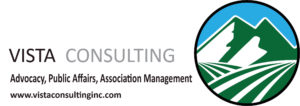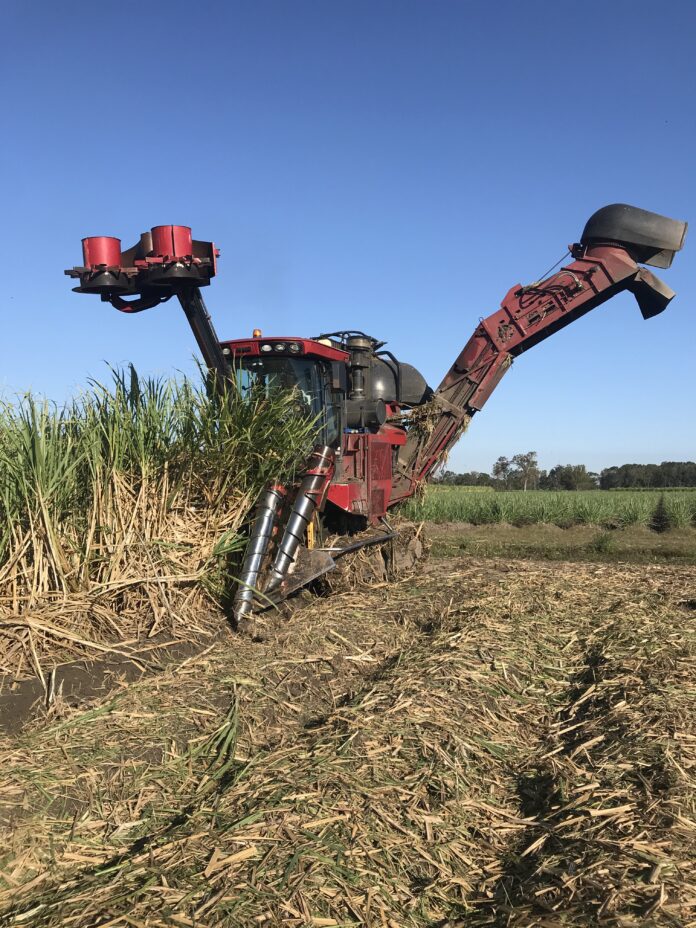The Friant Water Authority held its Thursday, August 25, 2022 board of directors meeting online and in person at the Visalia Convention Center. I showed up about 10-minutes late, a lot of slow pokes doing only 70 mph on Highway 99. First thing I noticed when I walked in the room was Rufino Gonzalez of the US Bureau of Reclamation was sporting a very understated Mohawk do. Looked good and made me a bit mournful of having a hairline that stops closer to my ears than the top of my head.
The Meeting
You know when you watch Star Trek and Captain Kirk is on an away team leaving Mr. Spock on the bridge? You know who you still feel confident the Enterprise is in good hands? Friant CEO Jason Phillips was on an away team somewhere and COO Johnny Amaral was sitting in for him. Also, Chairman Cliff Loeffler was present.
I missed the public comment and sat down just in time hear the consent calendar passed. CFO Wilson Orvis gave his report and it was approved.
Water Operations
Ian Buck Macleod Water Resource Manager said this water year has played out and it’s time to look forward to the fall. Shasta and Folsom Reservoirs are below average for this time of year, but there is 300,000 a/f more CVP storage than last year. San Luis Reservoir is in good shape. South of Delta exports has been running three units at the Jones Plant and that should continue which is a pleasant surprise. Especially considering the Yuba transfers have made it past the Delta if I understood. Overall project water in San Luis should stay OK if the pumps continue.
Macleod said there was a good monsoon-created boost to the San Joaquin River watershed. The Kings River too. He said with most districts cutting off deliveries this water may be better used for next year’s supplies.
Director Edwin Camp asked what could derail the three pump operations at Jones through September. Macleod said water quality and temperature are the two issues. But at this time things are pretty good.
Report from the Bureau
Gonzalez said there were significant amounts of debris the monsoon inflow pushed into Lake Edison. The rain in August was way above average. He’s going up into the wilderness to install a new snow gauge next week if I heard correctly. The USBR will be working on other high country projects with Southern California Edison.
Friant Kern Canal
Janet Atkinson Stantec Engineering said the earth work excavation is on time and moving forward well. The canal embankment restoration is moving north to south. More than half a million cubic yards of material was moved last month. So far 1.8 million yards3 has been moved. That’s a lot of shoveling. There has been a lot of work on the siphons that run under the canal. There are natural streams and drainage channels the FKC passes through. Siphons have to be built to allow them to flow and prevent flooding and a host of other problems. Uh oh, Atkinson said there was some subpar quality cement poured in a box culvert. Bad cement makes bad concrete so the contractor will have to fix that.
through. Siphons have to be built to allow them to flow and prevent flooding and a host of other problems. Uh oh, Atkinson said there was some subpar quality cement poured in a box culvert. Bad cement makes bad concrete so the contractor will have to fix that.
There have been six pairs of nesting birds spotted in the path of the construction and as soon as the fledglings fly away the buffer zone can be entered. There will be some change orders but Atkinson wanted the board to know the construction team has been working wonderfully. That includes the Bureau, Friant and the contractors. She pointed out the high quality drone photography and ended her report saying, “It’s getting built.”
External Items
Alex Biering gave some updates about the Governor’s water supply strategy recently released. It is heavily focused on regional self-reliance like desal that isn’t as applicable to the Valley. The document was short on things helpful to the Valley. She’s not the only one to share that view.
Biering said next Wednesday is the last day to pass a bill and the gov will have 30-days to sign or veto somewhere between 800 and 1,200 bills. AB 2201 was amended to lessen the burden on GSAs and put more onus on the counties. Bering said AB 2201 will most likely pass and a veto appears to be the only way to stop it. SB 2105 dealing with climate change has been amended with prohibition on the State Board to issue permits has been softened. It will bring some wiggle room on determining what climate change will bring. Good to know the legislature won’t require fortune telling.
Amaral said he was going to be brief on his federal update but someone said he was sitting in Phillips chair so his report will take a half hour at least. He said almost two-years ago when the Biden administration started there was a build back better bill that has now morphed into the inflation creation bill that recently passed. The House Republicans want to introduce a bill before the end of the term that will help place them in a better position as the House is expected to become a Republican majority. He summed that up as there is very little going on in Congress and that’s always a good thing.
Amaral and consultant Austin Ewell will be giving tours and presentations on the Friant Kern Canal repairs to congressional members and staff, Metropolitan Water District and the Almond Board. That’s a busy and important task. He also said the O&M report will have some information on FKC matters.
O&M
Chris Hickernell reported there have been hundreds of days without any injuries or pulling cars out of the canal. The aquatic milfoil and algae is staying reasonable. He said the impact at the subsidence area that impacts the FKC isn’t a big hole in the ground. The dip is gradual but with the new grade having been raised by earthwork you can see a big wall of dirt that really illustrates the conditions.
Hickernell said don’t get in the canal – it’s dangerous. There is also an invasion taking place in Bakersfield by homeless nomads cutting through the fence and dumping all manner of trash along the FKC. His crews haul out dump trucks full of trash monthly from all along the canal. He reported there has been a big increase in spam and phishing emails to the Authority’s email accounts. They have some software in place to help filter that out. Good for them. I asked and Hickernell agreed to make public – if they can figure out how – to stop getting phone calls offering to extend a nonexistent auto warranty. Amaral said in the meantime until that solution is developed he’ll instruct staff to give the scammers my phone number.
Possible Wet Year Operations
Macleod and Hickernell tag teamed the next item. Last month Director Kent Stephens asked what is going to happen if this coming year is wet and the canal’s carrying capacity is reduced by construction. The goal is to move as much water as possible without a spill at Friant Dam, especially in a wet year with the canal under repairs. The puzzle is how to manage releases from Friant Dam into the FCK to get as much water as possible downstream and not lose potential supplies and storage at Millerton Lake.
Hickernell said the big concern is in many places the canal bank is down to the top of the liner. Canal flooding downstream of Deer Creek is way too easy if big diversions by contractors is cutoff without enough notice. Water levels can go way up in a hurry. Staff has to be very precise in managing flows.
Macleod said one way to deal with this is to work with the Bureau to get earlier allocations on Class I and II waters. He researched previous years allocations and developed a predictive scenario. He showed a chart on the flow fluctuation occurring at Deer Creek during different water year types. He tied this together with historical spills from Friant Dam. It looks like getting the Bureau to make allocations earlier is key to managing releases.
Chairman Loeffler asked Stevens if this answered his question and he said, “Unfortunately yes.” He said some other things but I won’t being writing them down.
Macleod said releases to the Exchange Contractors caused an extra 60,000 a/f in San Luis due to scheduling problems. The uncertainty of Delta deliveries prompted the Bureau to withhold allocating water in Millerton in case of Ex Con deliveries. Dam operations are big deal and must take into consideration many facets. With the goal of being super helpful both Fresno ID and Madera ID offered to take the extra flows that can’t make their way downstream due to capacity. Loeffler thanked them and recognized their generous offer.
Blueprint News
Ewell is the volunteer CEO of the Water Blueprint for the San Joaquin Valley. He said the Blueprint was invited to Fresno State University to a meeting with Secretary of the Interior Deb Haaland and others.
He said there is a review of the Governor’s water strategy and there will be a meeting in Madera in October where state leaders will be invited. He said the Collaborative Action Plan is still working on a working agreement between the caucuses.
Ewell was asked how the relationship between the Governor and the Blueprint is going. He said there is recognition from top officials in his administration like Wade Crowfoot and Karen Ross.
Director Chris Tantau asked where the Collaborative Action Plan is and which way it is heading. Ewell said as more details are being worked out there is a gap forming between the various caucuses. However, a return to the ground rules agreements can help. In any event it illustrates the need for the Blueprint to keep going.
Camp asked what role the Blueprint can play in the Gov’s water strategy. Ewell said the message is there is no better group to help lead addressing the needs of the San Joaquin Valley.
San Luis Delta Mendota Update
Orvis said there hasn’t been much change since last month but the SLDM is reworking how it allocates costs to its members. The San Luis Transmission project is on hold for the most part at this time. A public/private partnership may be the way to make this work. USBR’s Michael Jackson said the Bureau is indeed planning on keeping three pumps running at Jones through September.
CEO Report
Phillips reported online from I believe San Diego. His first comment was he isn’t on vacation, he’s on the Urban Water Conference board. He said the situation on the Colorado River is causing anxiety in Southern California. He said you can smoke and mirror only so much with strategy but the fact is fallowing farmland is the default solution to cutting water use. That isn’t playing well with many folks not directly involved in ag. Retiring one million acres and the food it provides is the plan and why some commodity groups and other farming associations think this is a good idea is beyond him. The gov’s strategy ignores conditions and blames climate change. Phillips said the Blueprint is uniquely situated to deal with this issue and speak for the Valley.
Phillips said there will be a Washington DC trip next month to request water and funds. He also announced his son in the Navy has been stationed in Georgia, I believe he said. With that he said he planned to go back to the beach but he was asked about if food security is a topic on mind.
He said history shows dealing with food security won’t be a priority before it’s a problem. He told one of the under secretaries of the interior if food security isn’t a priority then long lines to receive grocery handouts and unemployment checks with be a priority whether the government likes it or not.
After Party
Shortly before noon the regular meeting adjourned for lunch and a workshop. We had a choice between chicken and beef kabobs. I wear a cowboy and not a chickenboy hat so I opted beef. I humbly suggest the chef try seasoning the meat with something – preferably spices, next time. The pilaf was good.
A couple of months ago Dr. Don Portz, San Joaquin River Restoration Program Manager, who works for the Bureau, gave the board an update on the salmon situation. This month Dr. Don brought Chad Moore to present the board with an update on the water management side of the restoration. The settlement of the lawsuit that brought about the restoration program called for the redundantly redundant “co-equal” goal of fish restoration and water supply.
This is not an easy subject to grasp and having an update helps tremendously. Moore pointed out there is not a San Joaquin River Watermaster. The position doesn’t exist and the traditional watermaster duties are divided here and there. The water supply goal relies on recapture and recirculation.
A reverse flow pump back program is a part of the water supply. Pumps at Shafter, Lake Woollomes and Deer Creek check stations would move SJR water or supplies representing recaptured SJR water flow down the California Aqueduct and be sent to the Friant Kern Canal. The supplies would be pumped upstream in the Friant Kern Canal. This would allow more Friant contractors access to the recaptured flows.
The reverse flow plan got derailed in discussions about water quality in the FKC. An agreement has been made in that area if I understand correctly. Also, if I understand correctly the pump back program and the KFC capacity repairs were both included in the settlement so the pump back may come back into play. In addition a low flow valve has been installed on the Madera Canal as part of the agreement is listed as progress and of course it is.
Moore said the Airborne Snow Observatory has been a big help and is expected to continue to yield results. Not only is the forecasting data from ASO more accurate it is gathered faster. It has moved allocation announcements to sooner on the calendar.
He said he and the team he works with don’t see the restoration goals as different. He said there are fish and there are farms, the settlement is where they come together.
Macleod said Friant plays a big part in achieving the SJR Restoration goals. He said Patterson and Banta Carbona IDs are capturing restoration flows. However, there are times when PID and BCID are trying to capture their own flows and that means the SJRR flows have be caught in the Delta at the Jones plant and sent back down the Delta Mendota Canal. That water can be stored in San Luis and opens up transfer and trade opportunities. But not all of the water available for recapture can be moved through the Friant system.
Macleod said there is still a disconnect between what is expected by the actual current conditions and historic conditions determining how this program works. The Delta and the flows that reach it are very different today than even 60-years ago.
As I recall the Natural Resource Defense Council wanted the SJR restored to pre-Columbian or at least pre-project conditions. There are portions of the San Joaquin River’s course without a historically identifiable channel. It meandered and shifted year by year. Some years there were floods and some years flows small enough to walk across without getting your ankle wet. Some years there was no water at all.
Macleod wrapped his presentation up by saying without Moore and the Bureau’s restoration team he doesn’t believe the big improvements in forecasting with ASO would have been achieved. He thanked them for working so cooperatively with Friant. Our old friend consulting engineer Steve Ottemoeller was mentioned several times as being integral to the process.
Director Eric Borba thanked Portz, Moore and Macleod for the good work they do. Delano Earlimart ID GM Eric Quinley also thanked them for the hard work.
The Restoration Administrator is chosen by Friant and the Environmental Coalition represented by the NRDC. They can also get shed of him. Another old friend, consulting engineer Bill Luce called in to say the RA term is for three years and the qualification is they can’t be currently employed by the federal government. He said a while back a RA was removed and Friant and NRDC both agreed on this pretty quick. Portz said the RA can’t be funded by the feds. The current RA is named Tom Johnson. He is an independent engineer, doesn’t work for a firm and has other clients in other areas. Now that I think about it I’m surprised he isn’t a household name.
Aaron Fukuda, GM Tulare ID thanked Moore and said he’s called him many times in the middle of the night has received good, quick answers and thanked him publicly.
Director Carl Jensen asked about getting some of the necessary infrastructure design finished. There are fish screens and other facilities that have to be built. Portz had a lot to say about the design. The Bureau has learned a lot from other, somewhat similar projects on how to come up with something that works. At about 1:40pm the meeting wrapped up.
DISCLAIMER OF RESPONSIBILITY; Waterwrights strives to provide its clients with the most complete, up-to-date, and accurate information available. Nevertheless, Waterwrights does not serve as a guarantor of the accuracy or completeness of the information provided, and specifically disclaims any and all responsibility for information that is not accurate, up-to-date, or complete. Waterwrights’ clients therefore rely on the accuracy, completeness and timeliness of information from Waterwrights entirely at their own risk. The opinions expressed in this report are those of the author and do not represent any advertisers or third parties.
ALL RIGHTS RESERVED. Copyright 2022 by WaterWrights.net/DAW
FRIANT WATER AUTHORITY
854 N. Harvard Ave., Lindsay, CA 93247, Office 559/562-6305 Email: information@friantwater.org www.friantwater.org
The Friant Water Authority is a Joint Powers Agreement with 17 districts to operate and maintain the Friant Division of the Central Valley Water Project. Water from the San Joaquin River is diverted at Friant Dam at Millerton Lake to the Madera/Chowchilla Canal to the north and the Friant/Kern Canal to the south. More than one million acres of mostly family farms and numerous communities get their surface supplies from the Friant Division.
Staff: CEO Jason Phillips, CFO Wilson Orvis, Government Affairs & Communication Alexandra Biering, Water Resource Manager Ian Buck-Macleod, Superintendent Chris Hickernell, Chief of External Affairs/COO Johnny Amaral and Attorney Don Davis.

































